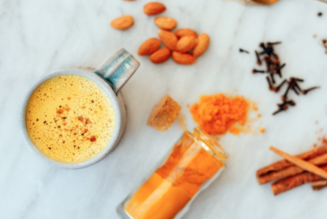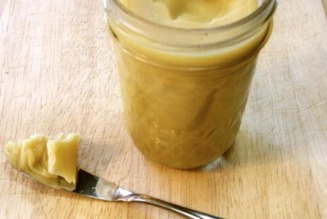Ayurveda is a 5,000-year-old medical philosophy predicated on the idea that we are influenced by three main doshas – vata, pitta, and kapha. These three doshas in Ayurveda, describe our state of mind and all functions of the body. While all three doshas are present in everyone, Ayurveda states that we often have a dosha that’s predominant from birth. When the doshas are balanced, we are healthy; when they are unbalanced, we become increasingly vulnerable to disease. Let us now focus on vata dosha.
Hey Vata – “Slow Down”
Being a vata type you undoubtedly are an active and energetic person. If there were ever a need for speed it’s specific for vata individuals. Plain and simple, vata types love moving – running, jumping, tumbling, twirling, flying, and movement of all types. Due to all this active energy, vata types are most vulnerable from overwork, over exercise, and tend to overextend themselves beyond the scope of their physical capacity.
The Vata Body
Vatas commonly have a thin build, muscles generally not as well-developed as the other two main types [pitta, kapha] and often find it hard to gain weight. Dry skin? Thought so. Vata types can often have dry, cracked or even rough skin. This makes sense since the predominant qualities of vata doshas are dry, rough, and cold.
The Vata Mind
Vata types love excitement and new experiences. Vatas are creative, energetic and very flexible. When vatas are balanced they are lively, take initiative and are great conversationalists. When imbalanced, vata types easily become vulnerable to worry, anxiety, nervousness and insomnia. Vata are easily able to grasp ideas quickly and often have great short term memory but not-so-great long term memory. A well developed vata mind is agile making for great intellects. When this agile nature of the vata mind is well developed, vata types can be great intellects and scholars. On the other hand, if there is too much flexibility of the mind without structure this can make the vata mind “spacey” and at times ungrounded.
Creative Motion
Vata types are governed by the mobile quality which makes them inclined to a state of creative motion. This makes vata types vulnerable to exhaustion because these individuals go beyond their own physical stamina. Despite vata types being ones who most need rest, they are also the ones most likely to keep going. Vata types – need to calm down and rest more! Vata types are predominately made from the most variable elements – ether and air. Due to these variable elements vata’s sexual appetite varies just like the wind. Some days the wind is calm and gentle while other days, the wind furiously storms about. This best explains the sexual nature of vata types. That said, vatas are often the most creative of people often fantasizing with intense passion.
Vata Pacifying Meals: Warm – Grounding – Slightly Oily Foods
Hard Digestion
Vata types often have irregular digestion; meaning very hungry at times and at other times no hunger at all. They also are thought to have a “hard” digestive tract which makes them vulnerable to experience symptoms of abdominal distention, flatulence, and a tendency towards a “nervous appetite”.
Light Sleepers
Vatas often have irregular sleep patterns and whatever sleep these individuals are able to get tends to be “light” sleep. It’s only until vatas become tired and exhausted that they experience deep sleep. Generally, vatas have difficulty falling asleep and being “light sleepers” wake up several times throughout the night. Due to the mobile quality inherent to vata types, these individuals become vulnerable to all “types” of movement – grinding teeth, sleep-talkers, sleep-walkers and commonly have the most dynamic dreams. Vata dreams are adventurous dreams centered around the enjoyment being chased.
Vata Management
Vata individuals are made primarily of the air element and just like the wind, vatas are always moving. Due to the ‘air’ element and the cold, dry, light, and mobile qualities – management for vata types is centered around principles of:
– Warming
– Moistening and
– Weight promoting
Several considerations for vata types:
- eat more warm, brothy and easily digestible foods
- eat at regular times to help promote balance in life
- avoid stimulating foods [i.e. coffee, tea, tobacco and spicy foods]
- avoid foods which are dry, cold, and light
- consider eating more ‘healthy oils’ [ghee, flax, hemp, sesame]
Sweet, Sour & Salty
Ayurveda describes an interesting relationship of taste and its influence upon the body. According to this philosophy, vata types often are most balanced by sweet, sour and salty tastes. Interestingly, these tastes [sweet, sour and salty] are considered to be moistening and nutritive in action; the very management goals for vata types.
Improving Digestion
Vata types are characterized as having irregular digestion and even vulnerable to constipation. Therefore, vata individuals may want to consider digestive stimulants to help promote their appetite and digestive ability. Moistening and bulking elements [i.e. flaxseed, psyllium seeds] may also help to manage constipation which is common for vata types.
Great Veggies For Vatas [cooked well]
- asparagus
- beets
- carrots
- green beans
- sweet potatoes
- onions
- radishes
- turnips
Awesome Fruit For Vatas [ripened]
- bananas
- apricots
- avocados
- berries
- cherries
- fresh figs
- grapefruit
- lemons
Terrific Grains For Vatas
- well cooked oats
- cooked rice
Favorable Beans:
- chickpeas
- mung beans



![Female Health: Amenorrhea [cessation of menses] – An Ayurvedic Perspective](https://healthyayurveda.com/wp-content/uploads/2015/07/1.-Amenorhea--327x219.png)




